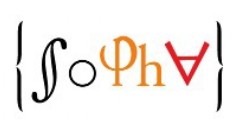The debate over whether phenomenal consciousness can overflow access consciousness is a cornerstone of contemporary philosophy of consciousness (Block, 2011, 2023). Proponents argue that our subjective experience often exceeds what is cognitively accessible, challenging the alignment of perception and reportability. However, this debate has largely been confined to human cognition, leaving open the question of its implications for non-human animals, where reportability does not exist as a key element for inference to consciousness. This paper examines this philosophical issue through the lens of perceptual illusions, in particular “forced perspective”—a sophisticated perceptual manipulation—employed by bowerbirds (Ptilonorhynchidae) in their mating displays (Kelley & Kelley, 2014).
Bowerbirds construct elaborate bowers and arrange objects within them to create the illusion of uniform size, a strategy hypothesized to exploit the mate's perception (Endler et al., 2010). If this behavior involves more than the phenomenal experience of visual stimuli—requiring intentional design, attention to spatial relations, and the ability to assess the target's perspective—it may indicate access consciousness, rather than mere phenomenal consciousness. Until now, the question has only been whether garden birds have a culture (Madden, 2008). Drawing on behavioral and ecological studies, I argue that forced perspective in bowerbirds implies a form of conscious representation that integrates perception with action planning and environmental manipulation.
This analysis provides an empirical foothold for addressing overflow theories, suggesting that the boundary between phenomenal and access consciousness is more porous than often assumed. Moreover, it lends support to the growing body of evidence for high-level consciousness in non-human animals, challenging anthropocentric biases in our understanding of sentience and cognition. Ultimately, the bowerbird's case invites us to reconsider the cognitive architecture underlying their seemingly aesthetic choices, positioning them as agents with access-conscious capabilities.
References:
Block, N. (2011). Perceptual consciousness overflows cognitive access. Trends in Cognitive Sciences, 15(12), 567‑575. https://doi.org/10.1016/j.tics.2011.11.001
Block, N. (2023). The Border Between Seeing and Thinking. Oxford University Press. https://philarchive.org/rec/BLOTBB
Kelley, L. A., & Kelley, J. L. (2014). Animal visual illusion and confusion: The importance of a perceptual perspective. Behavioral Ecology, 25(3), 450‑463. https://doi.org/10.1093/beheco/art118
Endler, J. A., Endler, L. C., & Doerr, N. R. (2010). Great Bowerbirds Create Theaters with Forced Perspective When Seen by Their Audience. Current Biology, 20(18), 1679‑1684. https://doi.org/10.1016/j.cub.2010.08.033
Madden, J. R. (2008). Do bowerbirds exhibit cultures? Animal Cognition, 11(1), 1‑12. https://doi.org/10.1007/s10071-007-0092-5

 PDF version
PDF version
